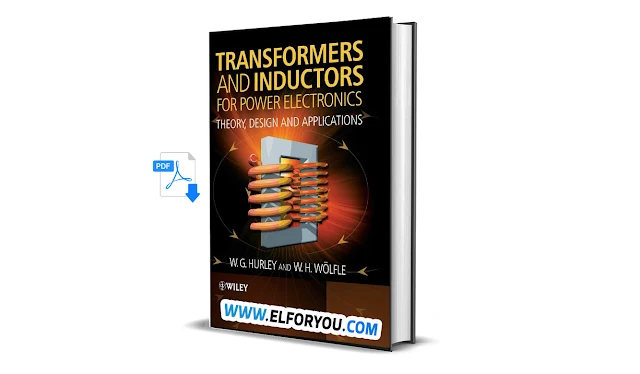Introduction;
The growing demand for compact, efficient, and reliable energy systems has made power electronics one of the most critical fields in modern engineering. At the heart of these systems lie two essential magnetic components: transformers and inductors.
The book Transformers and Inductors for Power Electronics serves as a comprehensive technical reference, offering engineers and students the tools they need to master the design of magnetic components for both low and high-frequency applications.
1. The Role of Transformers and Inductors in Power Electronics
Transformers and inductors are fundamental to circuits like:
DC/DC converters (e.g., buck, boost, flyback)
AC/DC and DC/AC inverters
Electric vehicle (EV) charging systems
Renewable energy converters
Their design directly affects efficiency, size, EMI performance, and thermal stability.
2. Magnetic Design Fundamentals
The book opens with key electromagnetic principles:
Magnetic flux and reluctance
Core saturation
Faraday’s Law
Inductance vs. permeability
Understanding these concepts is essential for optimal transformer and inductor design, especially in high-frequency circuits.
3. Selecting Magnetic Core Materials
One of the most practical parts of the book is the chapter on magnetic core materials. It compares:
Ferrites for high-frequency applications
Powdered iron for EMI-sensitive environments
Nanocrystalline and amorphous materials for ultra-efficient designs
Keywords integrated: magnetic core materials, transformer core selection, high-frequency ferrites
4. High-Frequency Transformer Design
This is the core of the book, focused on:
Design of transformers in Flyback and Forward converters
Minimizing core losses and copper losses
Optimal winding techniques
Leakage inductance control
Skin and proximity effects
Keywords: high-frequency transformer design, flyback transformer winding, EMI reduction in transformers
5. Inductor Design for Filters and Energy Storage
The book also addresses:
Filter inductors for DC/DC and AC/DC stages
Energy-storage inductors in buck/boost topologies
Techniques to limit core saturation
Reduction of eddy current losses
Keywords: power inductor design, filter inductor for converters, saturation in inductors
6. Thermal Management of Magnetic Components
Thermal considerations are covered in depth:
Calculating thermal resistance
Material selection for insulation
Passive and active cooling
Measuring temperature rise in transformers
Keywords: thermal management in transformers, temperature rise in inductors
7. EMI and Noise Mitigation
Electromagnetic interference (EMI) is a growing concern. The book suggests:
Balanced winding geometries
Proper shielding
Layout techniques to reduce loop areas
Keywords: transformer EMI, EMI shielding, low-noise inductor design
8. Case Studies and Applications
The book includes real-world examples:
Transformer design for 250W Flyback converter
Inductors for PFC (Power Factor Correction) circuits
Transformers for electric vehicles and solar inverters
These case studies make theory actionable.
Transformers and Inductors for Power Electronics is not just a technical book—it's a design companion for every engineer in the field. With a strong focus on high-frequency design, EMI control, and thermal optimization, this book bridges the gap between physics and practical application.
Whether you’re building a compact phone charger or a large-scale inverter, mastering the concepts in this book is key to your success in modern power electronics.
Recommended for:
Electrical engineering students
Power electronics designers
R&D engineers in renewable energy and EV industries
Contents Chapter:
1: Introduction.
2: Inductance.
3: Inductor Design.
4: Transformers.
5: Transformer Design.
6: High Frequency Effects in the Windings.
7: High Frequency Effects in the Core.
8: Measurements.
9: Planar Magnetic.
10: Variable Inductance.
Information:
Title: TRANSFORMERS AND INDUCTORS FOR POWER ELECTRONICS.
Language: English.
Size: 3.92 MB.
Author: W. G. Hurley and W. H. We olfle.
